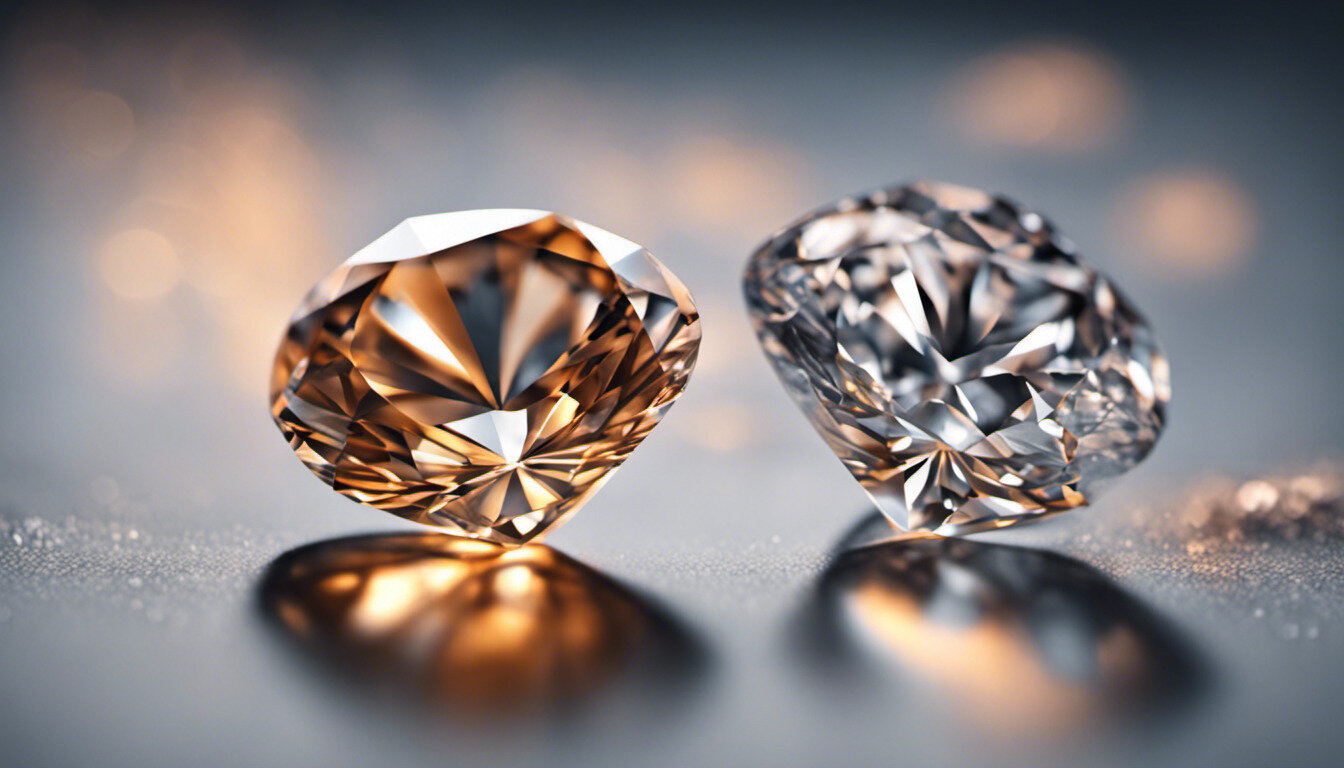In the realm of fine jewelry, diamonds have always been synonymous with luxury, elegance, and sophistication. However, a new player has emerged in the diamond industry: synthetic diamonds. In this article, we’ll explore the fascinating world of synthetic diamonds, shedding light on their origin, properties, and growing popularity among consumers seeking ethical and sustainable alternatives to traditional mined diamonds.
Understanding Synthetic Diamonds
The Science Behind Synthetic Diamonds
Synthetic diamonds, also known as lab-grown or cultured diamonds, are created in controlled laboratory environments using advanced technology that replicates the natural diamond-growing process. These diamonds are grown from tiny diamond seeds using either high pressure, high temperature (HPHT) or chemical vapor deposition (CVD) methods, resulting in gems that are chemically and physically identical to natural diamonds.
Ethical and Sustainable Sourcing
One of the key advantages of synthetic diamonds is their ethical and sustainable sourcing. Unlike mined diamonds, which often come with ethical concerns such as environmental damage, human rights abuses, and conflict, synthetic diamonds are produced in controlled laboratory settings with minimal impact on the environment. This makes them a more socially responsible choice for conscientious consumers.
Properties of Synthetic Diamonds
Identical Composition
Synthetic diamonds possess the same chemical composition as natural diamonds, consisting of carbon atoms arranged in a crystal lattice structure. This means that synthetic diamonds exhibit the same hardness, brilliance, and durability as their natural counterparts, making them suitable for a wide range of jewelry applications.
Clarity and Color Options
One of the benefits of synthetic diamonds is the ability to control their clarity and color more precisely than natural diamonds. Since synthetic diamonds are grown in controlled laboratory environments, manufacturers can manipulate the growth process to produce diamonds with specific characteristics. This allows consumers to choose diamonds with the desired clarity and color, resulting in a more customized and personalized jewelry experience.
The Popularity of Synthetic Diamonds
Affordability and Value
Synthetic diamonds are typically more affordable than natural diamonds, making them an attractive option for budget-conscious consumers. Since synthetic diamonds are produced in controlled laboratory environments, the cost of production is lower than mining diamonds from the earth. This translates to lower prices for consumers, allowing them to acquire larger, higher-quality diamonds for the same budget.
Environmental Consciousness
Synthetic diamonds are gaining popularity among consumers who prioritize environmental consciousness and sustainability. The diamond mining industry has a significant environmental footprint, lab diamonds, including habitat destruction, water pollution, and carbon emissions. By choosing synthetic diamonds, consumers can minimize their environmental impact and contribute to a more sustainable future.
Conclusion
In conclusion, synthetic diamonds represent a promising alternative to traditional mined diamonds, offering ethical, sustainable, and affordable options for consumers. With their identical composition, customizable properties, and growing popularity, synthetic diamonds are poised to revolutionize the diamond industry and redefine the standards of fine jewelry. Whether adorning engagement rings, earrings, or necklaces, synthetic diamonds offer a timeless beauty that is as ethical as it is elegant.

